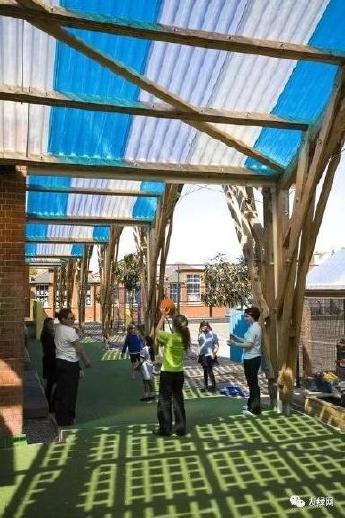Westborough Primary School/Cottrell&Vermeulen Architecture Ltd… Image © Anthony Coleman.

Since 1970, human energy consumption has begun to exceed the annual self-sufficiency of the Earth. In other words, our use and pollution of nature exceed its limits of self recovery. According to World Bank statistics, if the world population reaches an estimated 9.6 billion people by 2050, it will require three Earths to provide the necessary natural resources to sustain the current human way of life..

Every day, countless amounts of carbon dioxide are emitted into the atmosphere through factories, transportation, fuel combustion, and even the respiration of plants and other organisms. Climate change is becoming increasingly apparent, to the extent that government departments and private enterprises have set targets to reduce carbon dioxide emissions. Because carbon dioxide is the main greenhouse gas, high concentrations of carbon dioxide in the atmosphere can lead to air pollution, acid rain, and other consequences..


Raw materials or building materials in fields such as mining, transportation, industrial and chemical integration all generate carbon dioxide, so the construction industry has a great impact in this regard‘ The concept of implicit carbon refers to all the impacts caused by greenhouse gases generated throughout the entire life cycle of materials (soil extraction, manufacturing, construction, use/maintenance, and life expectancy/disposal). Carbon neutrality aims to avoid the impact of imbalanced greenhouse effects by calculating carbon emissions, which is another solution. Although this topic may seem very broad and almost non-existent to us, the materials chosen and the methods of handling them during the construction process can leave a carbon footprint, which is something we should consider..

The following are some points that should be considered when reducing the carbon footprint of a project:.
Berkeley Green Skills Centre/Hewitt Studios Image Cortesia de Hewitt Studios.
A good project can reduce carbon emissions during the use of buildings. It is crucial to consider how to change the living and usage of facilities and buildings. In fact, it is estimated that 20% of energy consumption is generated during the design and construction stages, while 80% is generated during the building usage stage. Therefore, appropriately considering insulation and natural lighting/shading can significantly reduce the demand for energy use in the later stage..
2. Understand the materials specified in the project and their sources. As mentioned earlier, the extraction, production, and transportation of ordinary building materials all require a significant amount of energy and carbon. Taking Brazil as an example, the steel industry accounts for 35% of carbon emissions in the industrial sector, while cement production accounts for 19%. Some manufacturers are already looking for ways to mitigate these impacts. For example, some natural material production processes have low energy consumption, but the energy required to transport them to the construction site can result in excessive carbon emissions. The most objective way to compare the carbon footprint of products/solutions is through their EDP (Product Environmental Declaration). EDP.




